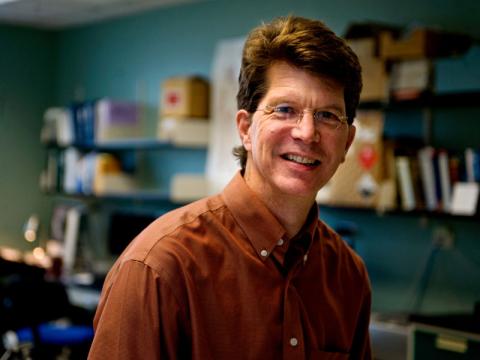Donald P. Gaver
Alden J. 'Doc' Laborde Professor of Biomedical Engineering

Office
Uptown: 534 Lindy Boggs Center
Downtown: 476 J. Bennett Johnston Building
Department of Biomedical Engineering
Tulane University
New Orleans, LA 70118
Courses Taught
Fall
BMEN 3440/6400: Biofluid Mechanics
Spring
BMEN 3820/6820: Mathematical Analysis of Biological Systems
Education & Affiliations
Biography
My laboratory aims to develop an understanding of the interrelationships between the mechanical and physicochemical behavior of biological systems. The main thrust of this research involves investigations of the pulmonary system. It is my intent to use this understanding to help, either directly or indirectly, the development of improved therapies for pulmonary disease. At present, this research focuses on investigations of interfacial phenomena and transport processes relevant to pulmonary disorders. These investigations require the study of surface-tension-gradient-driven (Marangoni) convection, capillarity, physicochemical hydrodynamics, viscous flows, fluid/flexible-boundary interactions and convection-diffusion transport. In addition, I have developed a recent interest in environmental research related to the influence of mechanical stress on cells. These studies focus on identifying the fluid stress field exerted on adherent cells, which may have an impact on mechanotransduction, cell adhesion or bacterial migration through porous media.
Honors and Awards
- National Young Investigator Award (National Science Foundation) (1993-1998)
- Member, College of Fellows, American Institute for Medical and Biological Engineering
- Provost’s Award for Research and Scholarly Excellence (2005) Teacher of the Year, Department of Biomedical Engineering, Tulane University (1992, 2005, 2007, 2008)
Selected Publications
Smith, B.J., S. Lukens, E. Yamaguchi and D.P. Gaver III. Lagrangian transport properties of pulmonary interfacial flows. Journal of Fluid Mechanics, on line: DOI:10.1017/jfm.2011.391.
Glindmeyer* IV, W., B. Smith* and D. Gaver. In Situ Enhancement of Pulmonary Surfactant Function Using Temporary Flow Reversal. Journal of Applied Physiology, doi:10.1152/japplphysiol.00643.2011.
Related Editorial: Samir D. Amin and Béla Suki. Could dynamic ventilation waveforms bring about a paradigm shift in mechanical ventilation? Journal of Applied Physiology; doi:10.1152/japplphysiol.01467.2011.
Gaver, D.P., III, D. Halpern, O.E. Jensen, and J.B. Grotberg. The steady motion of a semi-infinite bubble through a flexible-walled channel. J. Fluid Mech., 319: 25-65, 1996.
Ghadiali, S. N. and D. P. Gaver. Investigation of pulmonary surfactant physicochemical behavior under airway reopening conditions. Journal of Applied Physiology, 88: 493-506, 2000.
Ghadiali, S.N. and D. P. Gaver III, The influence of non-equilibrium surfactant dynamics on the flow of a semi-infinite bubble in a rigid cylindrical tube. J. Fluid Mech., 478: 165-196, 2003.
Bilek, A.M., K.C. Dee and D. P. Gaver, Mechanisms of surface-tension-induced epithelial cell damage in a model of pulmonary airway reopening. Journal of Applied Physiology, 94: 770-783, 2003.
Jacob, A.M. and D. P. Gaver III, An investigation of the influence of cell topography on epithelial mechanical stresses during pulmonary airway reopening. Physics of Fluids, 17: 031502 (11 pages), 2005.
Zimmer IV, M.E., H.A.R. Williams and D. P. Gaver III, The transport of an inactive surface-associated contaminant during the pulsatile motion of a semi-infinite bubble in a channel. J. Fluid Mech., 537: 1-33, 2005.
Smith, B.J. and D. P. Gaver III, The pulsatile propagation of a finger of air through a fluid-occluded cylindrical tube. J. Fluid Mech., 601: 1-23, 2008.
Pillert, J. E. and D. P. Gaver III. Physicochemical effects enhance surfactant transport in pulsatile motion of a semi-infinite bubble. Biophysical Journal, in press.
Ghadiali, S.N. and Gaver. D.P. Biomechanics of liquid-epithelium interactions in pulmonary airways. Respiratory Physiology & Neurobiology, 163(1-3):232-243, 2008.
Williams, Fauci and Gaver: Evaulation of interfacial fluid dynamic stresses using the immersed boundary method. Discrete and Continuous Dynamical Systems, in press.
